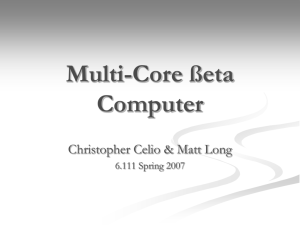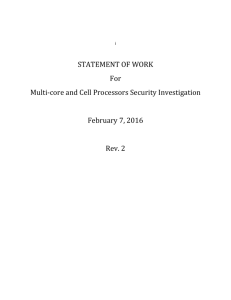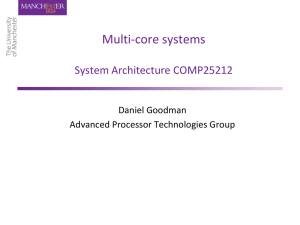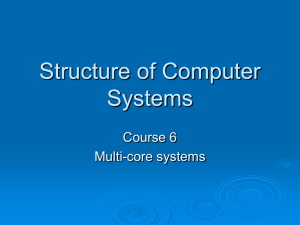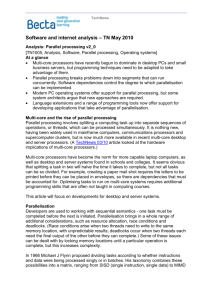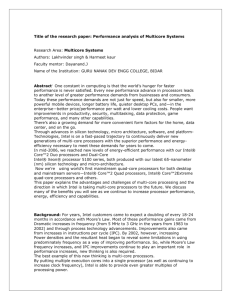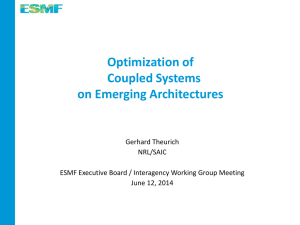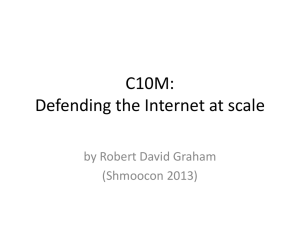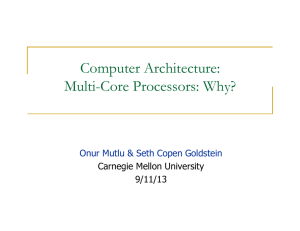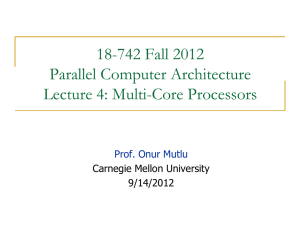Multi-core processors
advertisement
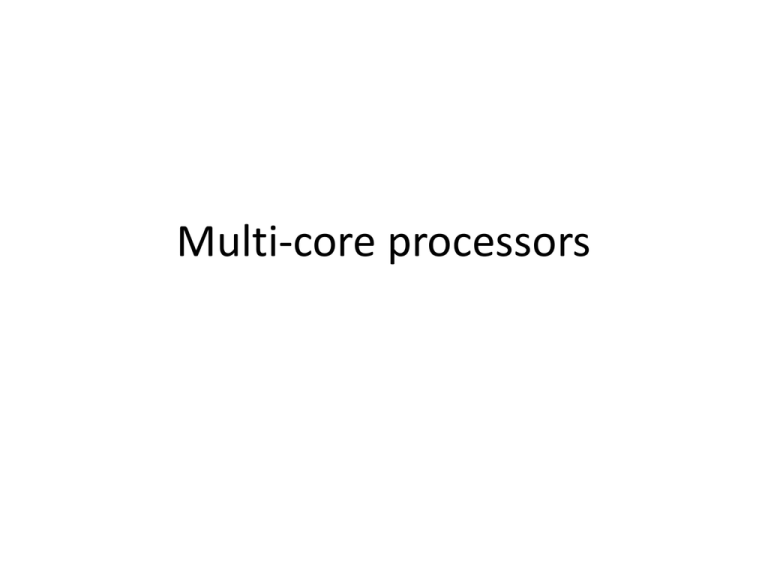
Multi-core processors Processor development till 2004 Out-of-order Instruction scheduling 2 Why multi-core ? • Difficult to make single-core clock frequencies even higher – heat problems • Deeply pipelined circuits: – heat problems, needs special cooling arrangements – Intel’s NetBurst architecture was not continued • Many new applications are multithreaded • General trend in computer architecture (shift towards more parallelism) 3 Why multi-core ? 4 Single-core computer 5 Single-core CPU chip the single core 6 Multi-core architectures Replicate multiple processor cores on a single die. Core 1 Multi-core CPU chip Core 2 Core 3 Core 4 7 Multi-core processor Multi-core CPU chip • The cores fit on a single processor socket • Also called CMP (Chip Multi-Processor) c o r e c o r e c o r e c o r e 1 2 3 4 9 The cores run in parallel thread 1 thread 2 thread 3 thread 4 c o r e c o r e c o r e c o r e 1 2 3 4 10 Within each core, threads are time-sliced (just like on a uniprocessor) several threads several threads several threads several threads c o r e c o r e c o r e c o r e 1 2 3 4 11 Interaction with the Operating System • OS perceives each core as a separate processor • OS scheduler maps threads/processes to different cores • Most major OS support multi-core today: Windows, Linux, Mac OS X, … 12 Instruction-level parallelism • Parallelism at the machine-instruction level • The processor can re-order, pipeline instructions, split them into microinstructions, do aggressive branch prediction, etc. • Instruction-level parallelism enabled rapid increases in processor speeds over the last 15 years 13 Thread-level parallelism (TLP) • This is parallelism on a more coarser scale • Server can serve each client in a separate thread (Web server, database server) • A computer game can do AI, graphics, and a physicsrelated computation in three separate threads • Single-core superscalar processors cannot fully exploit TLP • Multi-core architectures are the next step in processor evolution: explicitly exploiting TLP 14 General context: Multiprocessors • Multiprocessor is any computer with several processors • SIMD – Single instruction, multiple data – Modern graphics cards • MIMD Lemieux cluster, Pittsburgh supercomputing center – Multiple instructions, multiple data 15 Multiprocessor memory types • Shared memory: In this model, there is one (large) common shared memory for all processors • Distributed memory: In this model, each processor has its own (small) local memory, and its content is not replicated anywhere else 16 Multi-core processor is a special kind of a multiprocessor: All processors are on the same chip • Multi-core processors are MIMD: Different cores execute different threads (Multiple Instructions), operating on different parts of memory (Multiple Data). • Multi-core is a shared memory multiprocessor: All cores share the same memory 17 What applications benefit from multi-core? • • • • • Database servers Web servers (Web commerce) Multimedia applications Scientific applications, CAD/CAM In general, applications with Thread-level parallelism (as opposed to instruction-level parallelism) are better supported Each can run on its own core 18 More examples • Editing a photo while recording a TV show through a digital video recorder • Downloading software while running an antivirus program • “Anything that can be threaded today will map efficiently to multi-core” • BUT: some applications difficult to parallelize 19
